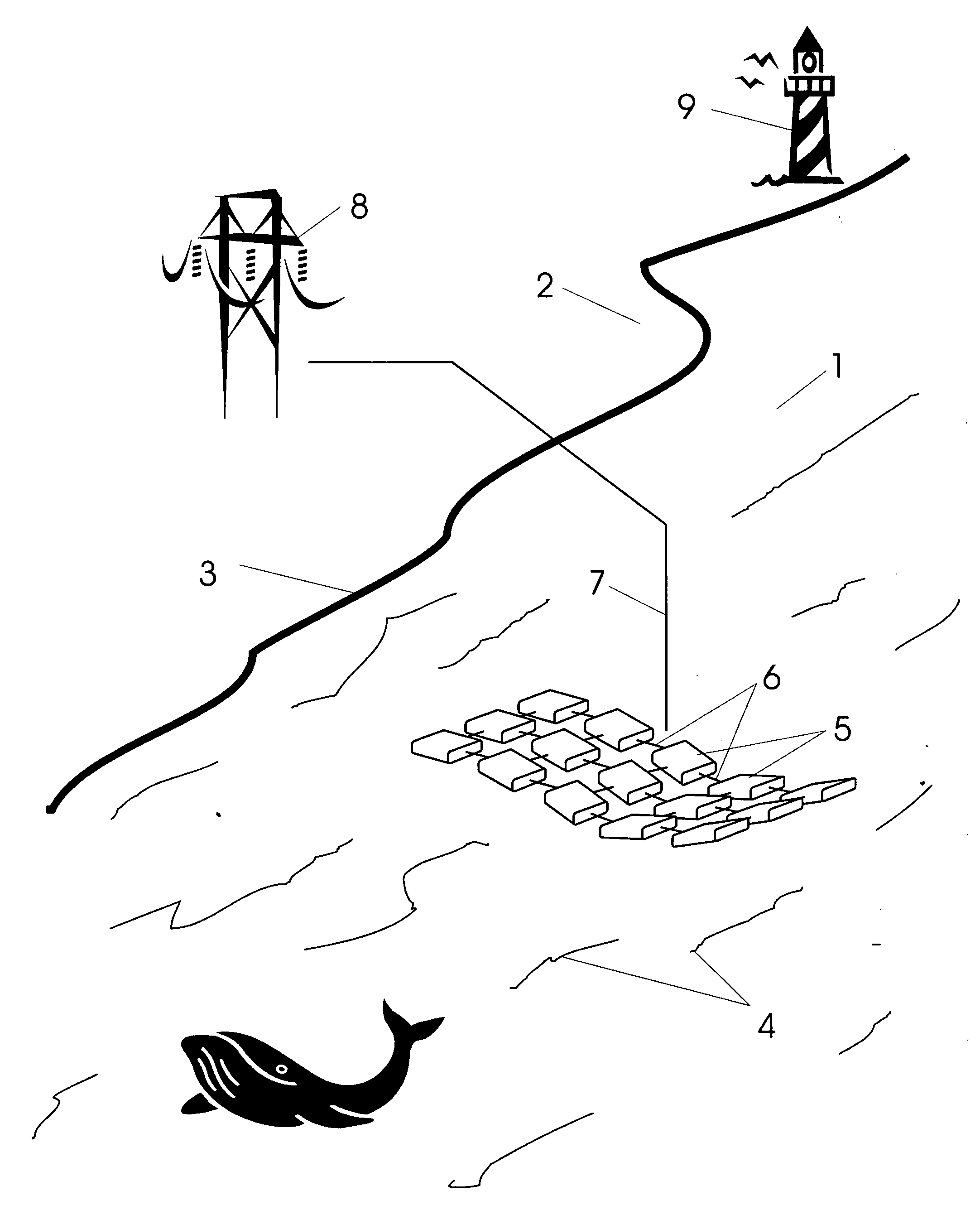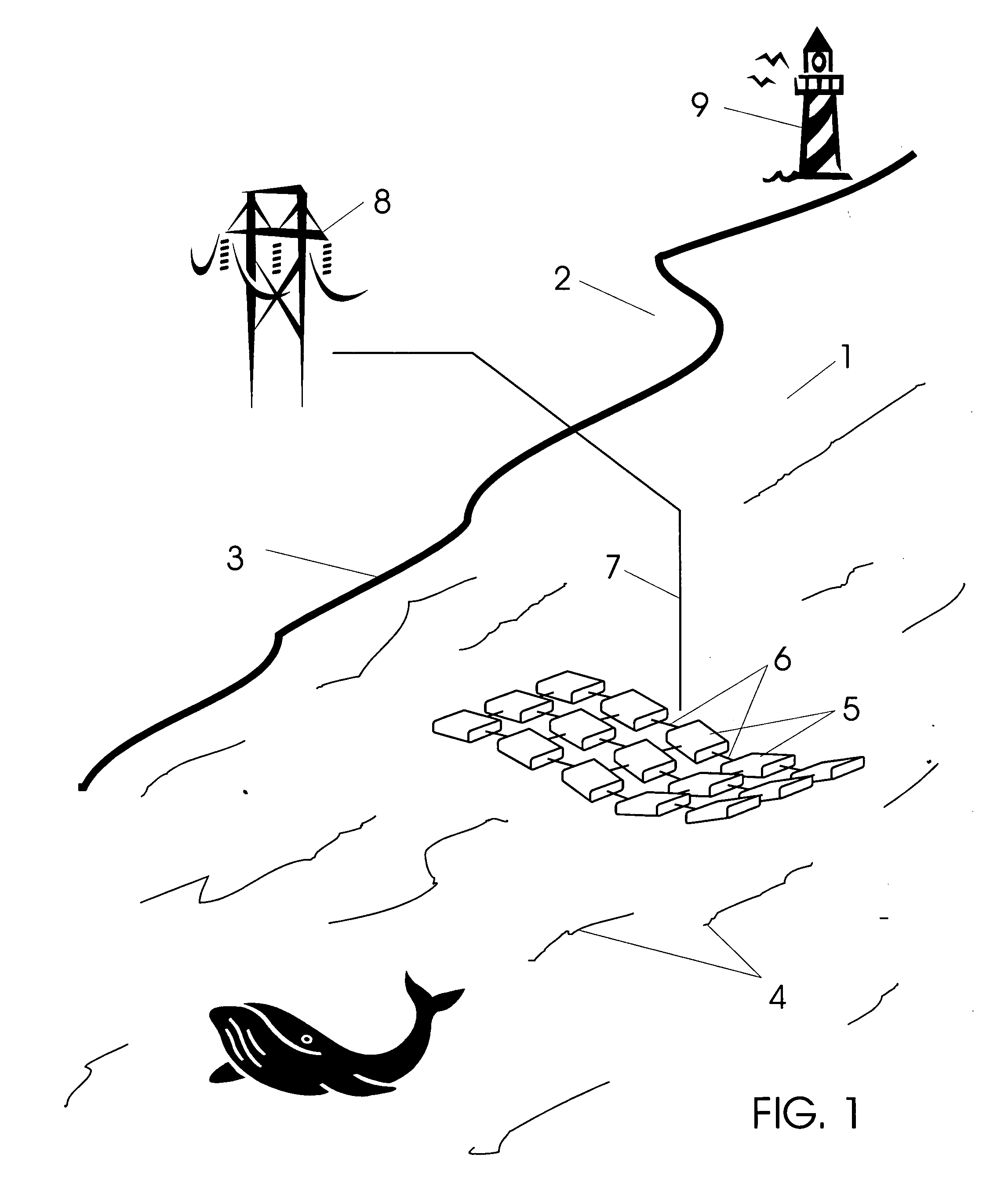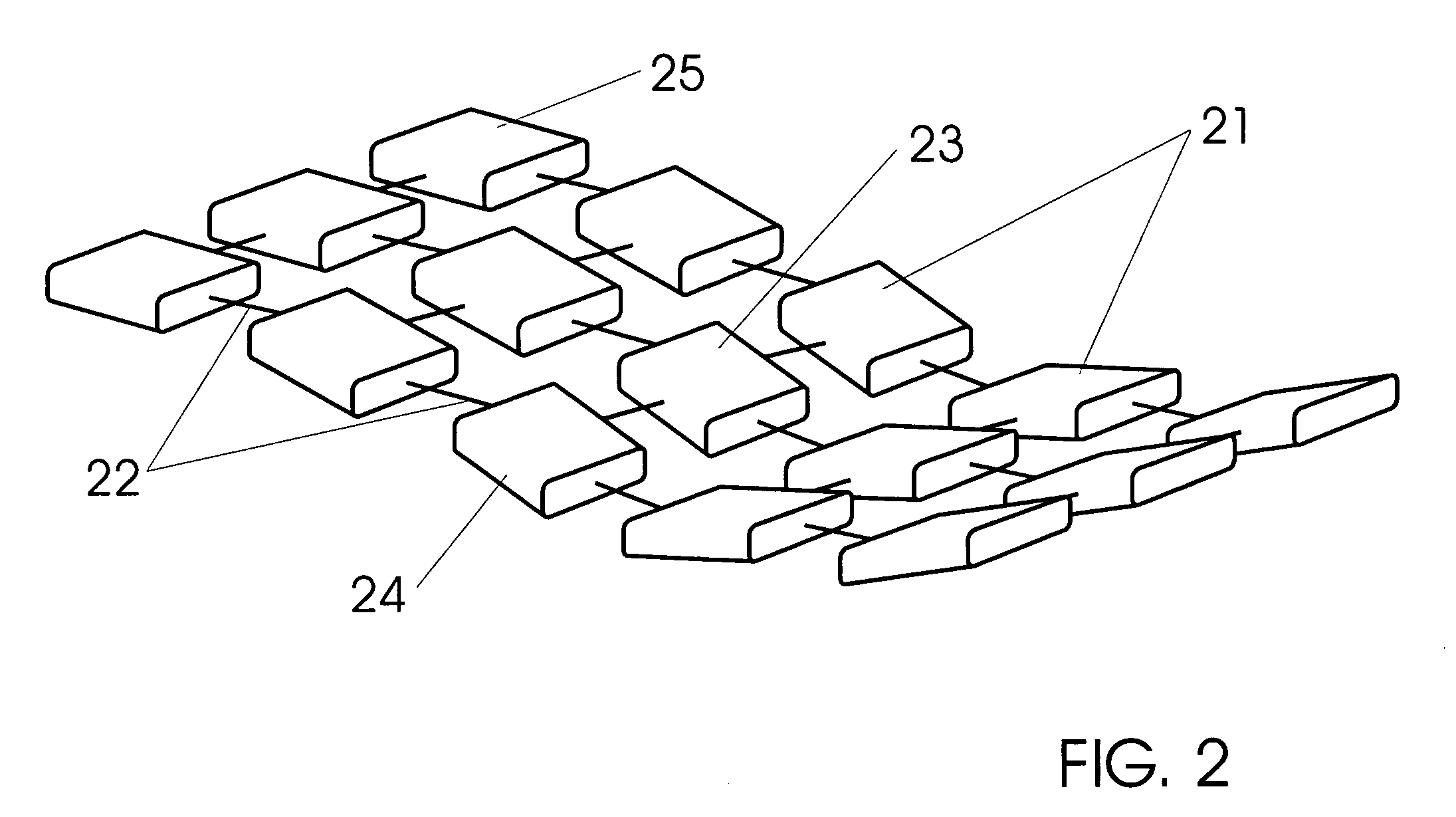Wave energy converters
a technology of wave energy converters and absorbers, which is applied in the direction of electric generator control, machines/engines, mechanical equipment, etc., can solve the problems of yemm's system nearly being operational, yemm's practice is nearly reduced, and the effect of reducing the number of yemm's is nearly compl
- Summary
- Abstract
- Description
- Claims
- Application Information
AI Technical Summary
Benefits of technology
Problems solved by technology
Method used
Image
Examples
Embodiment Construction
[0067]Wave energy converters are formed in accordance with the teaching as an array of point absorbers—or float members. Each float member is mechanically coupled to its neighbor(s) by way of a rigid link. A shaft extends between and passes through the hull of a float member at a pivot point. The pivot point permits rotational motion in two orthogonal dimensions such that the float member is permitted to heave, pitch, and roll under the influence of passing waves upon which they ride. Because the end of the link shaft is inside an enclosed space of the float member, it moves about relative to the axis of the float members; the tip lying within a spherical section at all times.
[0068]In most preferred embodiments, a link includes two ends—one each being coupled to a different float member. In this fashion, two float members are said to be ‘coupled neighbors’. Forces are conveyed to the interior of a float member by way of the rigid link shaft end. These forces may couple with and driv...
PUM
 Login to View More
Login to View More Abstract
Description
Claims
Application Information
 Login to View More
Login to View More - R&D
- Intellectual Property
- Life Sciences
- Materials
- Tech Scout
- Unparalleled Data Quality
- Higher Quality Content
- 60% Fewer Hallucinations
Browse by: Latest US Patents, China's latest patents, Technical Efficacy Thesaurus, Application Domain, Technology Topic, Popular Technical Reports.
© 2025 PatSnap. All rights reserved.Legal|Privacy policy|Modern Slavery Act Transparency Statement|Sitemap|About US| Contact US: help@patsnap.com



